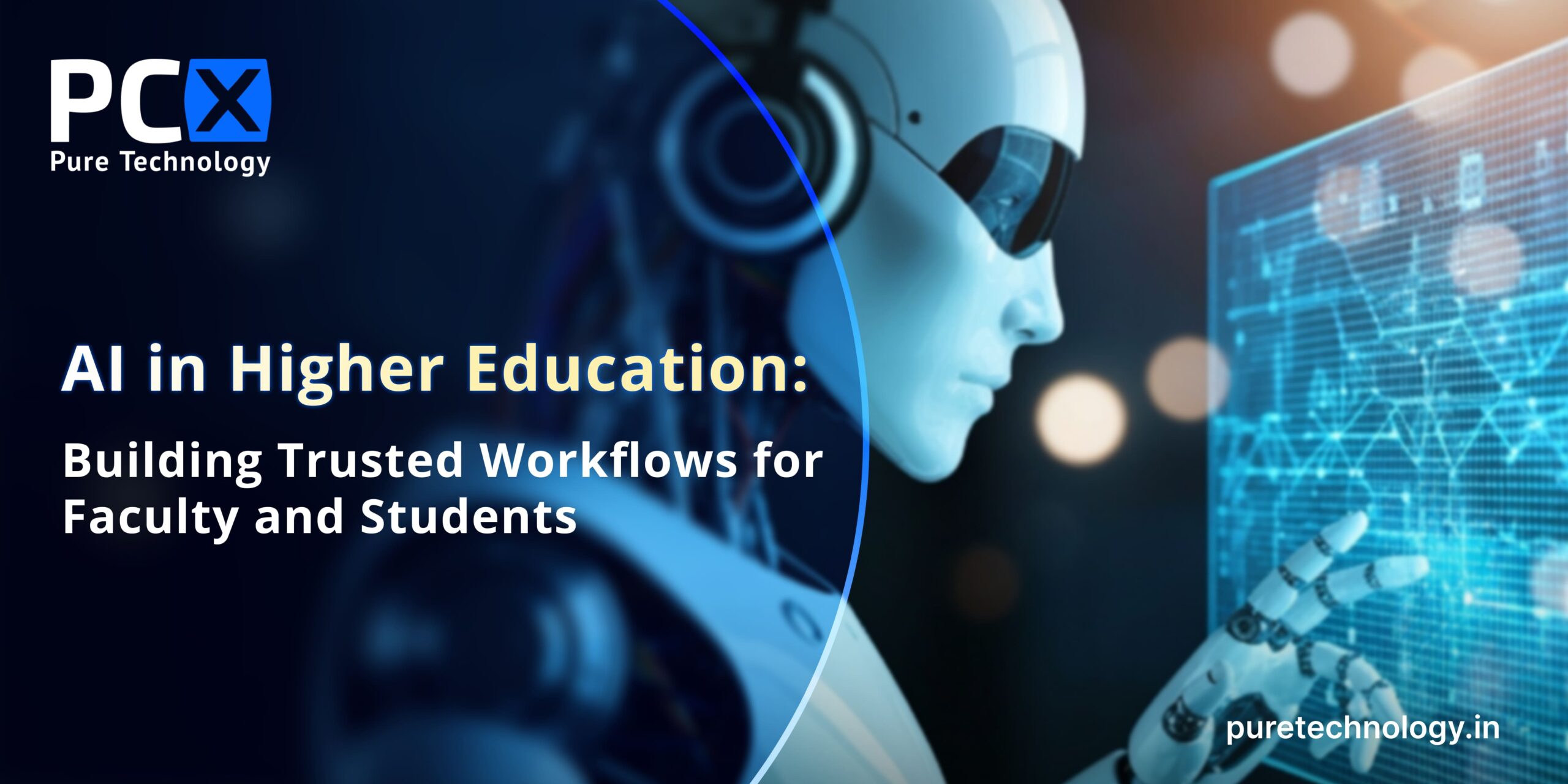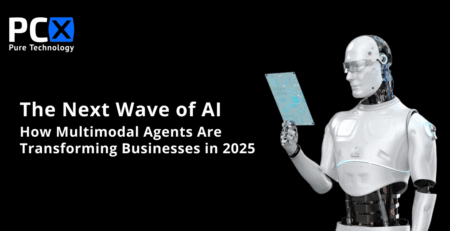AI in Higher Education: Building Trusted Workflows for Faculty and Students
Artificial Intelligence in higher education is no longer a futuristic idea. From predictive enrollment tools and AI-powered advising nudges to automated grading assistants, Agentic AI solutions are being piloted across universities. They promise efficiency, personalization, and better support for students and faculty.
But here’s the reality: many of these platforms remain underused, distrusted, or even abandoned—not because the AI itself is flawed, but because the workflows around it fail. Faculty don’t understand the reasoning, students lack visibility, and staff aren’t sure when to intervene.
The challenge, therefore, isn’t about “smarter AI.” It’s about smarter workflow design—systems that build clarity, encourage trust, and adapt to the complexity of academic life.This article outlines four practical design principles to ensure AI in higher education doesn’t just run in the background, but fits seamlessly into academic routines.
1. Design for Transparency at Every Step
Trust in educational AI starts with legibility, not performance. If students or faculty cannot see how an AI system reached a decision—whether it’s a recommendation to drop a course or an admissions score—they won’t rely on it.
For instance, if an advising system flags a student for falling below full-time status, it should clearly show:
- GPA implications
- Credit-hour requirements
- Human override options
Transparency must be embedded in the interface, not hidden in backend logic.
Recent surveys prove the urgency:
- Less than 40% of U.S. universities have formal AI usage policies (EDUCAUSE, 2025).
- 59% of academic leaders cite data privacy and transparency as their top concerns (Ellucian).
- Only 44% of UK students feel involved in decisions about digital learning tools (Jisc, 2023).
Bottom line: Opacity is not just poor UX—it’s an adoption blocker. Platforms like FD Ryze are already tackling this by enabling faculty to query AI outputs with explainable criteria and audit trails.
2. Don’t Automate What Requires Human Judgment
Not every academic decision can—or should—be automated.
AI-driven workflows often attempt to handle sensitive cases such as financial aid eligibility, academic probation, or placement levels. But these situations involve human judgment, context, and exceptions.
A recent FAFSA glitch in 2024 corrupted data for nearly one million applicants, delaying aid and creating chaos. Automated systems making decisions without human checks amplify such risks.
Instead, workflows must escalate complex cases to advisors rather than bypassing ambiguity. For example, before dismissing a student, the system should prompt a review of attendance, health accommodations, or personal circumstances.
Key principle: In higher ed, trust is built not by replacing judgment, but by knowing when to defer to it.
3. Build Feedback Loops That Actually Learn
Most academic AI tools work in static loops: data in, decisions out, no evolution. But Agentic AI should learn from interaction.
If a faculty member overrides a grade, or a student disputes an advising recommendation, that input should feed back into the system—not vanish as an exception.
Practical methods include:
- “Was this recommendation helpful?” prompts
- Faculty override reasons attached directly to workflows
- Automated system adjustments based on repeated patterns
According to the 2025 Global AI Faculty Survey, 54% of professors believe current evaluation methods are outdated, and 13% want a complete overhaul. Without responsive AI, the gap between faculty and technology only grows.
Feedback loops aren’t just about error correction. They’re about building trust and adaptability in AI-powered education.
4. Design Memory into Workflows
AI in education often treats every case as a blank slate. But real academic decisions require continuity and context.
For example, a student flagged “at risk” in semester three may have switched majors, filed repeated advising requests, or faced family challenges. If workflows don’t retain that history, interventions lack relevance.
Research from University College London shows that early semester engagement strongly predicts performance, making memory-driven systems vital for early interventions.
Benefits of workflow memory include:
- Reduced staff fatigue (no repeated data entry)
- Improved student trust (no re-explaining issues)
- Context-aware interventions that adapt over time
When AI systems remember prior overrides, support notes, and academic history, they transform into collaborative partners, not isolated tools.
The Future of AI in Higher Education: Smarter Design, Not Smarter Models
The real promise of Agentic AI in higher education is alignment—aligning automation with human workflows, academic nuance, and institutional culture.
If AI workflows don’t show their reasoning, adapt to context, or invite human intervention, they will fail to scale, regardless of how advanced the model is.The future isn’t about replacing educators with machines—it’s about designing AI that fits naturally into the complex, non-linear lives of students and faculty.
Call us for a professional consultation












Leave a Reply